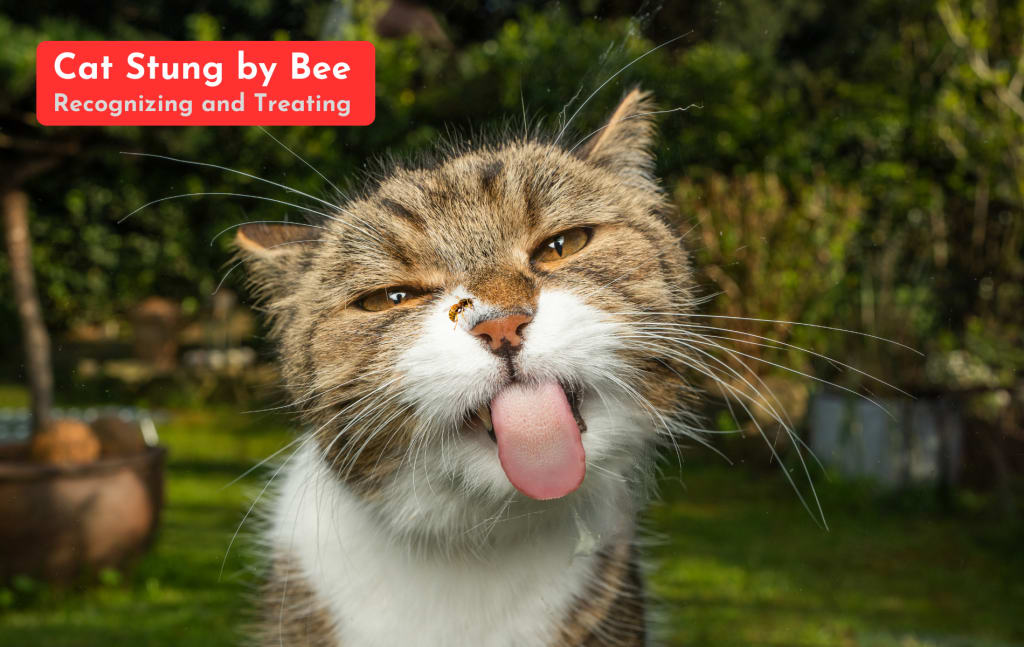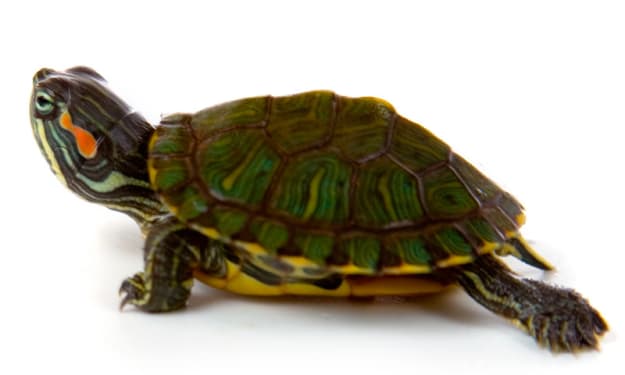Cat Stung by Bee: Recognizing and Treating
Preventing Feline Bee Stings

Cats, known for their curious and playful nature, often embark on adventures that bring them face-to-face with the wonders of the outdoors.
Occasionally, this exploration leads to unexpected encounters with stinging insects, such as bees. Though a bee sting may seem like a minor inconvenience, it can cause varying degrees of discomfort and, in some instances, more severe reactions in our feline companions.
In this extensive guide, we'll delve deeper into recognizing the signs of a cat stung by a bee, explore effective treatment methods, and provide practical tips for preventing feline bee stings.
Cat Stung by Bee: Signs and Symptoms
Being attuned to the signs of a bee sting is crucial for providing timely care to your beloved cat. Watch out for the following indicators:
- Localized Swelling and Redness: Bee stings typically result in swelling and redness at the site of the sting. Pay close attention to your cat's paws, face, or exposed areas.
- Pawing at the Face: If the bee sting occurs on or near the face, your cat may exhibit discomfort by pawing at their face or rubbing it against objects.
- Vocalization and Agitation: Cats, when in pain, may vocalize more than usual. Increased agitation, restlessness, or changes in behavior could indicate a bee sting.
- Hives or Rash: While less common, some cats may develop hives or a rash due to an allergic reaction to bee venom. Immediate attention is required in such cases.
These symptoms, while concerning, are manageable with prompt and appropriate care. Understanding each sign empowers cat owners to respond effectively to a bee sting incident.
Also Read: Is F3 Savannah Cat the Right Pet for You?
Treatment for Feline Bee Stings
If you suspect your cat has been stung by a bee, here are steps you can take to alleviate their discomfort and facilitate their recovery:
Stay Calm and Assess the Situation
Approach your cat calmly and assess the sting site. If the stinger is still present, use tweezers to gently remove it, being careful not to squeeze the venom sac.
Clean the Area
Wash the sting site with mild soap and water to prevent infection. Utilize a cotton ball or a soft cloth for gentle cleaning.
Apply a Cold Compress
To reduce swelling, apply a cold compress or ice pack wrapped in a thin cloth to the affected area for 10-15 minutes. Ensure the cold pack is not too cold, as extreme temperatures can damage the skin.
Administer Pain Relief (if necessary)
Before giving your cat any over-the-counter pain relievers, consult your veterinarian for recommendations based on your cat's health and weight.
Monitor for Allergic Reactions
Keep a close eye on your cat for signs of an allergic reaction, such as difficulty breathing, swelling beyond the sting site, or persistent vomiting. Seek immediate veterinary attention if any of these symptoms occur.
These first-aid measures are essential for comforting your cat after a bee sting. However, it's crucial to remember that severe reactions may require professional intervention, highlighting the importance of vigilant monitoring.
Preventing Feline Bee Stings: Practical Tips for Pet Owners
While it's challenging to prevent bee stings entirely, proactive steps can be taken to reduce the risk for your cat:
- Supervise Outdoor Activities: Keep a watchful eye on your cat when they are outdoors, especially in areas with a high bee population. Avoid letting them play near flowering plants where bees are commonly found.
- Regularly Inspect Your Yard: Periodically inspect your yard for beehives or nests. If you discover one, contact a professional pest control service to remove it safely.
- Limit Exposure During Peak Bee Activity: Bees are most active during warmer months, typically midday. Consider keeping your cat indoors during these peak bee activity times to minimize the risk of stings.
- Consult Your Veterinarian: If your cat has a history of severe reactions to bee stings or if you reside in an area with a high prevalence of venomous insects, consult your veterinarian. They may recommend preventive measures, such as antihistamines or allergy testing.
Incorporating these preventive measures into your routine reduces the likelihood of bee stings and creates a safer environment for your feline friend to explore.
Understanding Bee Behavior and Feline Sensitivities
To further enhance your cat's safety, it's beneficial to understand the behavior of bees and how feline sensitivities play a role in their encounters with these buzzing insects.
Bee Behavior
Bees are essential pollinators but can become defensive if they perceive a threat to their hive or themselves. Understanding when bees are most active and vigilant during these times can aid in minimizing potential encounters.
Feline Sensitivities
Cats, with their keen senses, maybe more attuned to the presence of bees than we realize. Recognizing your cat's body language and reactions to buzzing sounds or flying insects can help you intervene before a potential bee sting incident occurs.
By understanding bee behavior and feline sensitivities, you can proactively manage your cat's outdoor experiences and reduce the likelihood of stinging incidents.
Wrap Up
While a bee sting may initially seem like a minor incident, the well-being of your cat is paramount. By staying informed about the signs of a cat stung by a bee, taking immediate action, and implementing preventive measures, you can create a safer environment for your feline companion.
If you ever have concerns or if your cat displays signs of an allergic reaction, don't hesitate to seek professional guidance from your veterinarian. With careful attention and proactive care, you can help your cat enjoy a sting-free and comfortable life, allowing them to explore the world with the curiosity and playfulness that make them such cherished companions.
This comprehensive approach ensures the swift and effective management of bee stings and empowers cat owners to foster an environment where their feline friends can thrive safely.
FAQs
What to do if a cat gets stung by a bee?
If your cat is stung, stay calm. Remove the stinger if present, clean the area, and apply a cold compress. Monitor for signs of allergic reactions and consult your veterinarian.
How quickly will a cat react to a bee sting?
Cats may react immediately to a bee sting, showing signs like swelling, redness, and discomfort. However, reactions can vary, and some symptoms may take time to manifest.
Can bees make cats sick?
While bee stings can cause discomfort, they typically don't make cats sick. However, severe allergic reactions may occur in rare cases, requiring immediate veterinary attention.
Are bees safe for cats?
Bees are generally safe, but stings can be painful. Taking preventive measures, such as monitoring outdoor activities, helps create a safer environment for your cat.
Should I be worried if my cat gets stung by a bee?
Mild reactions are common, but severe responses require attention. Monitor for signs like difficulty breathing or excessive swelling and consult your vet if concerned.
How long does a bee sting last?
The duration of a bee sting's effects varies. Swelling and discomfort may last a day or two, but severe reactions necessitate prompt veterinary intervention.
Disclaimer: Some of the part of this post includes content written by AI.
About the Creator
Amir Hossain
I blog on everything and anything— hoping my blogs will make your days a bit happier!






Comments
There are no comments for this story
Be the first to respond and start the conversation.